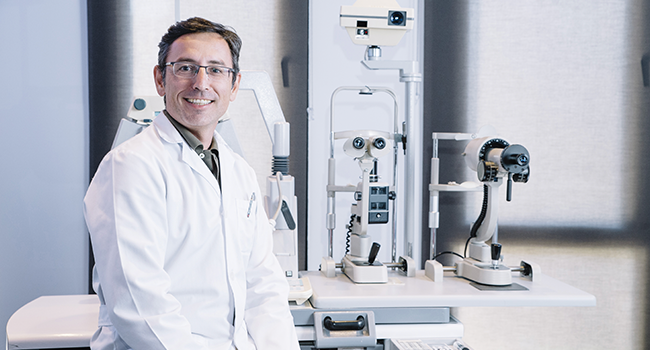Check Out the very best Optometrist Chino for Comprehensive Eye Care
Wiki Article
Exploring the most recent Technical Advancements in Optometry and What They Mean for Eye Doctors
In the ever-evolving area of optometry, recent technical innovations are reshaping how specialists approach eye care. From the precision of Optical Coherence Tomography to the nuanced understandings supplied by AI-driven analysis tools, these innovations are establishing brand-new standards in patient analysis and therapy. Teleoptometry is positioned to redefine access, making sure that knowledge goes beyond geographical restrictions. As these improvements permeate the method, eye doctors are confronted with the difficulty of embracing these devices to improve client results. The question stays: how will these technical shifts redefine the functions and obligations within the career?Innovations in Diagnostic Tools
Progressing the area of optometry, developments in diagnostic tools have transformed the means eye treatment experts assess and diagnose ocular conditions and visual impairments. The previous decade has actually witnessed substantial technological improvements, making it possible for even more comprehensive and precise assessments. Optical Coherence Tomography (OCT), as an example, supplies high-resolution cross-sectional pictures of the retina, enabling the early discovery of illness such as glaucoma and age-related macular degeneration. This non-invasive imaging strategy has actually come to be important in modern optometric technique.Another key development is the introduction of innovative corneal topography systems, which map the surface curvature of the cornea with accuracy. These devices are particularly helpful for suitable call lenses and identifying corneal disorders. Electronic retinal imaging has actually transformed typical ophthalmoscopy, using in-depth, breathtaking sights of the retina that facilitate detailed aesthetic assessments.
The growth of wavefront aberrometry has actually additionally been important, making it possible for the evaluation of refractive errors with unmatched accuracy (Opticore Optometry). This innovation helps in tailoring corrective lenses and improving surgical results for refractive surgical treatments. Collectively, these diagnostic advancements equip optometrists to supply premium person treatment, making certain very early intervention and tailored therapy methods, inevitably improving visual health and wellness results
AI in Person Monitoring
Structure on the structure of sophisticated diagnostic tools, the consolidation of expert system (AI) in individual management stands for a transformative jump for optometry. AI systems are increasingly employed to enhance effectiveness, accuracy, and personalization in patient treatment. By assessing large quantities of data, AI can determine patterns and forecast possible eye conditions, allowing optometrists to customize interventions better. This capability is essential in handling chronic eye illness such as glaucoma and diabetic person retinopathy, where very early discovery and continuous tracking are crucial.Furthermore, AI-driven systems help with streamlined individual interactions and administrative procedures. Automated scheduling, online assessments, and personalized follow-up strategies not just improve patient complete satisfaction however likewise enhance time administration for professionals. These systems can triage individuals based upon the urgency of their problems, making certain that those in vital need get punctual focus.
Moreover, AI enhances decision-making by offering optometrists with evidence-based suggestions and therapy pathways. By incorporating data from digital health and wellness records, AI devices supply understandings that notify professional decisions, reducing the threat of mistakes and improving client end results. As AI remains to progress, its duty in patient administration will likely increase, reshaping the landscape of optometric treatment.
Developments in Retinal Imaging
In the realm of optometry, retinal imaging has actually seen exceptional technical developments that are boosting diagnostic abilities and patient care. Advancements such as Optical Comprehensibility Tomography (OCT) and fundus digital photography have actually revolutionized how eye doctors examine the retina and imagine. OCT, particularly, supplies high-resolution, cross-sectional pictures of the retina, enabling the thorough exam of its layers. This capability is important for very early detection and management of conditions like glaucoma, diabetic person retinopathy, and age-related macular degeneration.Boosted imaging techniques like OCT angiography are additional refining analysis precision. This non-invasive method maps blood flow in the retina, providing crucial understandings into vascular wellness without the need for dye injections. Additionally, flexible optics technology is being integrated right into retinal imaging systems to correct ocular aberrations, supplying extraordinary photo clarity. Such developments assist in the recognition of minute retinal changes that can symbolize condition development.
Furthermore, improvements in expert system are enhancing retinal imaging by enabling computerized evaluation of large datasets. These systems aid optometrists in recognizing patterns a measure of pathology, thus improving analysis precision and effectiveness. Collectively, these advancements are transforming retinal imaging into a cornerstone of modern-day eye care, improving end results and broadening restorative possibilities.
Teleoptometry's Expanding Role
Teleoptometry is progressively becoming an important component of eye care, driven by innovations in electronic communication and diagnostic devices. As optometry welcomes you can look here digital change, teleoptometry assists in remote assessments, permitting eye doctors to prolong their services beyond standard borders. This is particularly helpful in underserved and country areas where access to specialized eye treatment is often minimal. By leveraging high-resolution video clip conferencing and progressed retinal imaging, eye doctors can carry out extensive eye examinations from afar, ensuring timely medical diagnosis and treatment.The integration of expert system (AI) further improves teleoptometry, making it possible for the evaluation of visual data and assisting in the discovery of eye problems such as glaucoma and diabetic retinopathy. AI-powered formulas can swiftly analyze complicated imaging information, supplying eye doctors with valuable insights that boost medical decision-making.
In addition, teleoptometry sustains continuity of care via smooth combination with electronic health records (EHRs), allowing eye doctors to maintain comprehensive patient backgrounds. This guarantees that people get individualized and constant care even when talking to various professionals.
In spite of these advantages, challenges stay, including ensuring information safety and managing client assumptions. Nevertheless, teleoptometry represents a substantial stride in the direction of more obtainable, efficient, and patient-centered eye treatment. As technology evolves, its role is positioned to increase additionally.

Future Patterns in Eye Treatment
A myriad of cutting-edge fads is readied to improve the future of eye treatment, driven by technical developments and the developing requirements of patients. One significant pattern is the combination of expert system (AI) in diagnostics, which guarantees to improve the precision and performance of eye exams. AI algorithms can examine substantial amounts of information from retinal photos, possibly identifying conditions like diabetic person retinopathy and glaucoma earlier than traditional techniques.Moreover, tailored medication is acquiring traction in optometry, with genetic testing informing personalized therapy strategies. This strategy aims to enhance individual outcomes by customizing treatments to specific genetic accounts. Wearable modern technology, such as clever contact lenses, is also on the horizon, providing real-time monitoring of intraocular stress or glucose degrees, thus giving continuous understandings into systemic and eye health.
The adoption of enhanced reality (AR) and digital fact (VIRTUAL REALITY) in training and client education is one more arising fad. These modern technologies provide immersive experiences that can improve understanding and skills both for clients and eye doctors. As these patterns progress, optometrists have to remain abreast of technological developments to offer cutting-edge care, making certain better client end results and fulfillment in the dynamic landscape of eye treatment.
Conclusion

Jointly, these analysis advancements encourage optometrists to deliver remarkable person care, making sure very early treatment and customized therapy techniques, eventually improving aesthetic health and wellness end results.

As these technologies continue to develop, eye doctors must adjust and include them right into practice, inevitably enhancing process effectiveness and raising the requirement of eye treatment delivered to clients.
Report this wiki page